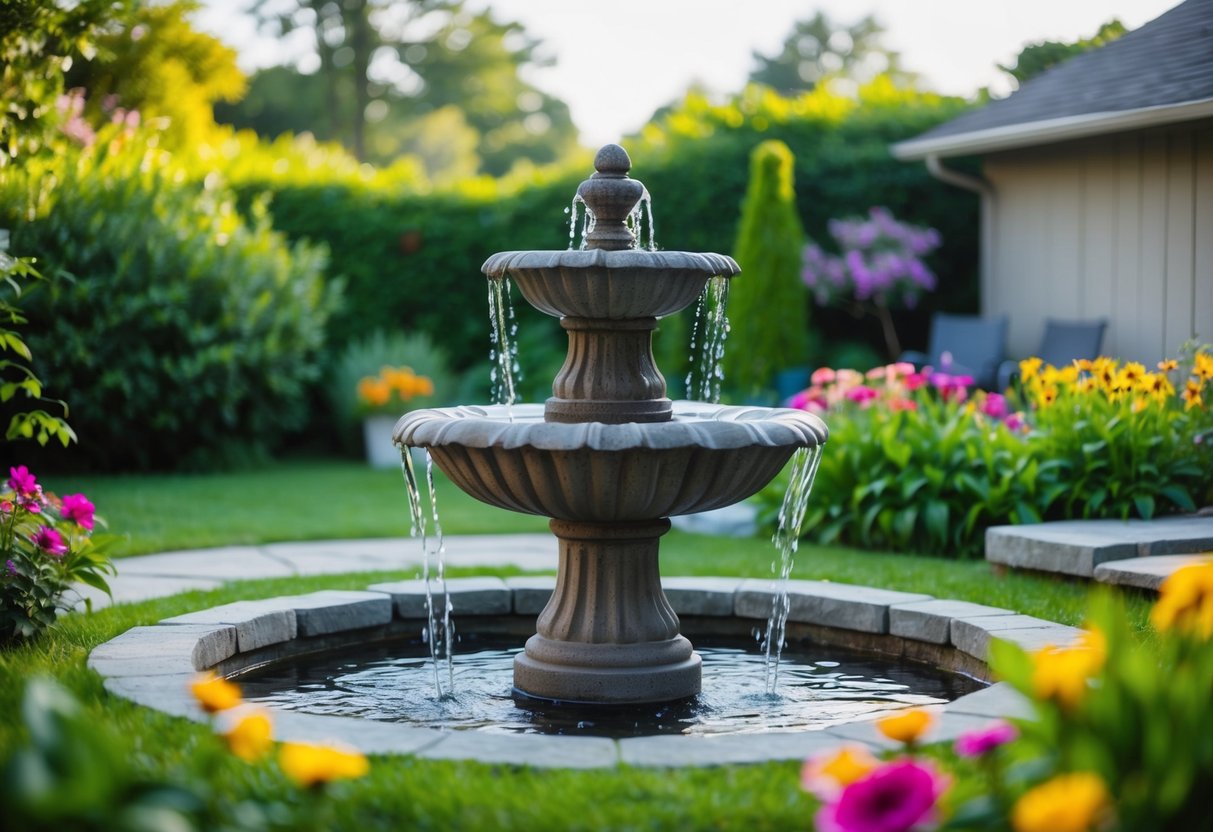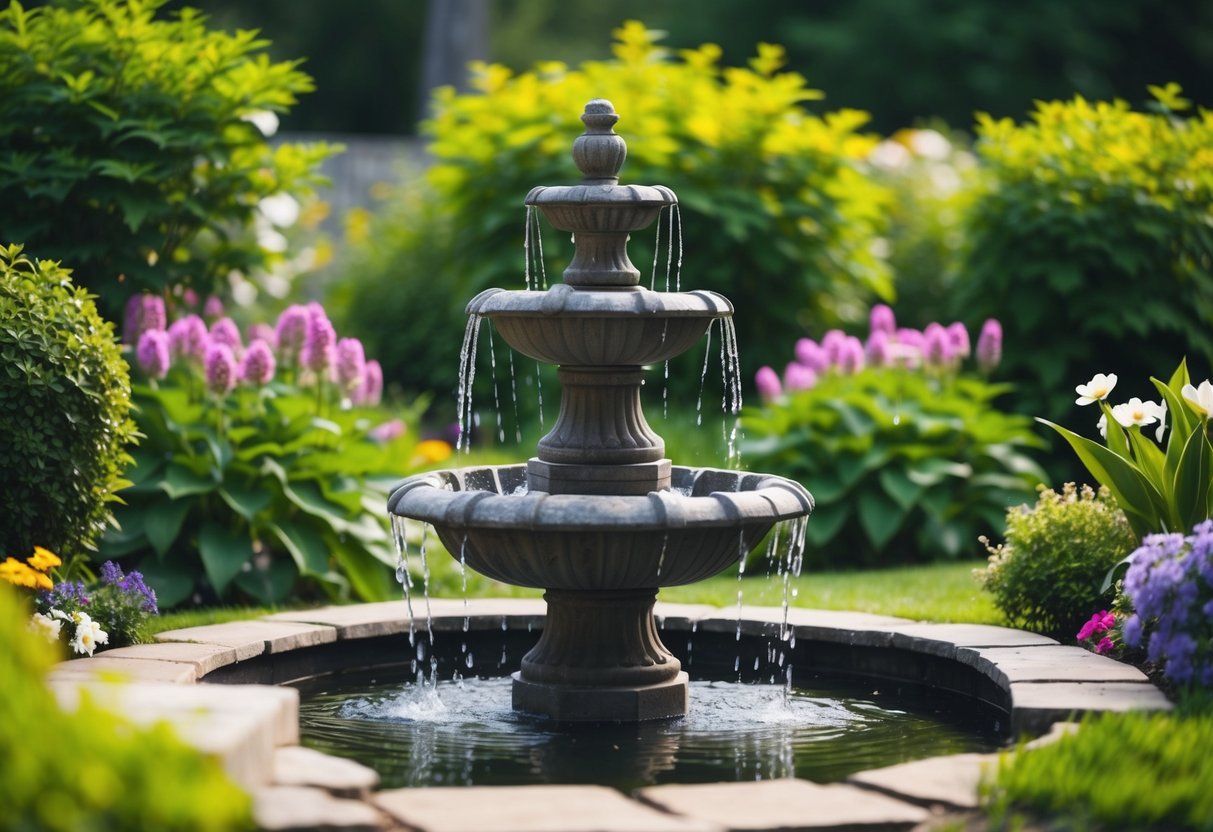
Considering the Style and Design
The style and design of the fountain should align with the aesthetic of the backyard. Traditional settings often pair well with classic tiered designs, while contemporary spaces can benefit from sleek, minimalist water features.
Materials play a significant role in the design. Stone or concrete offers durability, while metal or glass introduces modern elements. Choice of material affects not only appearance but also longevity and maintenance needs.
Anybody designing a fountain should keep in mind the existing landscape and architecture. Finding harmony between the fountain’s style and existing elements, like plants and patio furniture, can create a cohesive and inviting outdoor space. Planning these aspects with intention will ensure the fountain adds value and beauty to the yard.
Essential Materials and Tools
Creating a DIY fountain requires the right balance of functional and aesthetic materials that suit the type of fountain being built. Tools are equally important for assembling and installing the fountain safely and effectively.
Materials for Different Types of Fountains
For a solar fountain, necessary materials include solar panels specifically designed for water features. A small pump compatible with the solar setup ensures smooth water flow. Waterproof sealants are needed to prevent leaks around joints and seams. Choosing a reservoir that fits well with the intended design is crucial.
Constructing a bamboo fountain requires genuine bamboo tubes, a sturdy water pump, and strong twine to hold everything in place. Selecting a waterproof basin helps contain and recycle water efficiently. Bamboo sources should be eco-friendly and sustainable to ensure the fountain’s longevity.
When building a rock water fountain, selecting a variety of rocks in different sizes provides both stability and a natural aesthetic appeal. A submersible pump must be chosen with the correct capacity for the scale of the fountain. Clear tubing is essential for discreetly channeling water from the pump to the top of the fountain.
These materials combined with hand tools like a saw, drill, and pliers can simplify the process of constructing these outdoor water features while providing satisfaction and beauty to any garden or backyard space.
Step-by-Step Construction Guide

Creating a backyard fountain can enhance the aesthetic of an outdoor space. This guide focuses on building a container fountain and constructing a solar-powered feature, ideal DIY projects for both beginners and seasoned crafters.
Building a Simple Container Fountain
A simple container fountain brings tranquility with minimal setup. First, select a waterproof container like a ceramic pot or a metal tub. Make sure it is at least 18 inches deep and has no drainage holes. Fill the base with decorative stones for visual appeal.
Purchase a submersible pump adequate for the size of your container. Position it at the bottom, ensuring it’s submerged. Secure the power cord along the edge. For added effects, insert a tube to direct water flow and adjust the nozzle to your desired height.
Assemble and test the fountain. Fill with water until the pump is fully covered. Turn it on, adjusting if needed to control the water’s height and flow rate. Place the container on a stable surface, perhaps elevating it on bricks or a pedestal piece for an elegant finish.